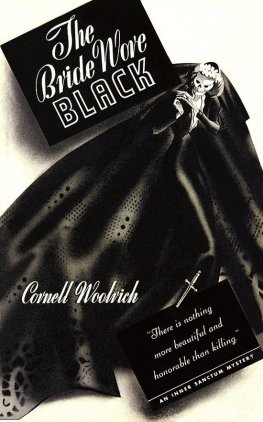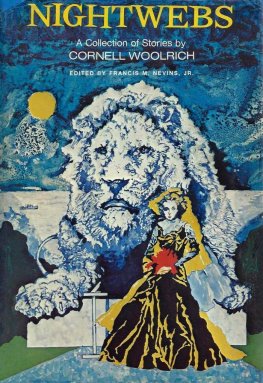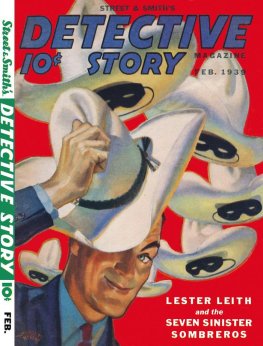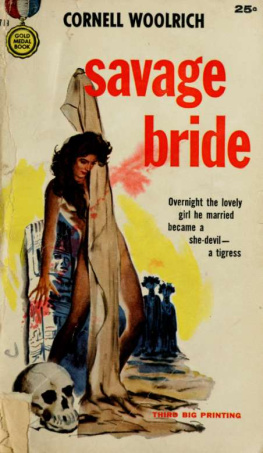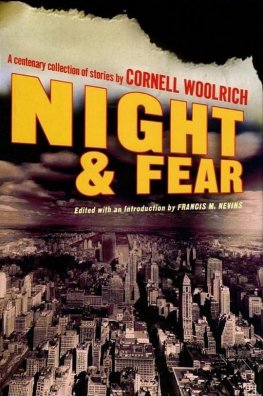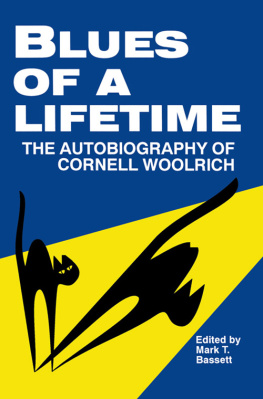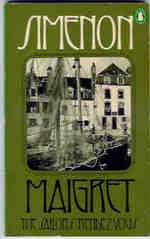Cornell Woolrich - Rendezvous in Black
Here you can read online Cornell Woolrich - Rendezvous in Black full text of the book (entire story) in english for free. Download pdf and epub, get meaning, cover and reviews about this ebook. year: 1982, publisher: Ballantine Books, genre: Detective and thriller. Description of the work, (preface) as well as reviews are available. Best literature library LitArk.com created for fans of good reading and offers a wide selection of genres:
Romance novel
Science fiction
Adventure
Detective
Science
History
Home and family
Prose
Art
Politics
Computer
Non-fiction
Religion
Business
Children
Humor
Choose a favorite category and find really read worthwhile books. Enjoy immersion in the world of imagination, feel the emotions of the characters or learn something new for yourself, make an fascinating discovery.

- Book:Rendezvous in Black
- Author:
- Publisher:Ballantine Books
- Genre:
- Year:1982
- Rating:3 / 5
- Favourites:Add to favourites
- Your mark:
- 60
- 1
- 2
- 3
- 4
- 5
Rendezvous in Black: summary, description and annotation
We offer to read an annotation, description, summary or preface (depends on what the author of the book "Rendezvous in Black" wrote himself). If you haven't found the necessary information about the book — write in the comments, we will try to find it.
Rendezvous in Black — read online for free the complete book (whole text) full work
Below is the text of the book, divided by pages. System saving the place of the last page read, allows you to conveniently read the book "Rendezvous in Black" online for free, without having to search again every time where you left off. Put a bookmark, and you can go to the page where you finished reading at any time.
Font size:
Interval:
Bookmark:
RENDEZVOUSIN BLACK
byCornell Woolrich
Textcopyright 1948 Cornell Woolrich.
Copyrightrenewed 1975 the Chase Manhattan Bank, NA., executor of the estate ofCornell Woolrich.
Reprintedby permission of the Chase Manhattan Bank, NA. as trustee under thewill of Cornell Woolrich.
Introductioncopyright 1979 by Francis M. Nevins, Jr.
Introduction
Hewas the Poe of the 20th century and the poet of its shadows. Foralmost 35 years this tormented recluse wrote dozens of hauntingsuspense stories, the most powerful of their kind ever written--stories full of fear, guilt and loneliness, breakdown and despair,and a sense that the world is controlled by malignant forces preyingon us. And throughout his life he felt those forces eating away athim.
CornellGeorge Hopley-Woolrich was born in New York City on December 4, 1903to parents whose marriage collapsed in his youth. Much of hischildhood was spent in Mexico with his father, a civil engineer. Theexperience of seeing Puccini's _Madame Butterfly_ in Mexico City atthe age of eight gave him his first insight into color and drama, andhis first sense of tragedy. Three years later, he understood thatsomeday he too, like Cio-Cio-San, would have to die, and from thatmoment on he was haunted by a sense of doom that never left him.
Duringadolescence he returned to Manhattan and lived with his mother andher socially prominent family, and in 1921 he enrolled in ColumbiaCollege with his father paying the tuition from Mexico City. He beganwriting fiction during an illness in his junior year, and quit schoolsoon afterward to pursue his dream of becoming another F. ScottFitzgerald. His first novel, _Cover Charge_ (1926), chronicles thelives and loves of the Jazz Age's gilded youth in the manner of histhen literary idol. This debut was followed by _Children of the Ritz_(1927), a frothy concoction about a spoiled heiress' marriage to herchauffeur, which won him a $10,000 prize contest and a contract fromFirst National Pictures for the movie rights. Woolrich was invited toHollywood to help with the adaptation and stayed on as a staffwriter. Besides his movie chores and an occasional story or articlefor magazines like _College Humor_ and _Smart Set_, he completedthree more novels during these years. In December of 1930, he entereda brief and inexplicable marriage with a producer'sdaughter--inexplicable because for several years he had beenhomosexual. He continued his secret life after the marriage, prowlingthe waterfront at night in search of partners, and after theinevitable breakup Woolrich fled back to Manhattan and his mother.The two of them traveled extensively abroad together during the early1930s. His only novel of the period, _Manhattan Love Song_ (1932),anticipates the motifs of his later suspense fiction with its tale ofa lovestruck young couple cursed by a malignant fate which leaves onedead and the other desolate. But over the next two years he soldalmost nothing and was soon deep in dept, reduced to sneaking intomovie houses by the fire doors for his entertainment.
In1934, Woolrich decided to abandon the "literary" world andconcentrate on mystery-suspense fiction. He sold three stories topulp magazines that year, ten more in 1935, and was soon anestablished professional whose name was a fixture on the covers of_Black Mask_, _Detective Fiction Weekly_, _Dime Detective_, andcountless other pulps. For the next quarter century he lived with hismother in a sucession of residential hotels, going out only when itwas absolutely essential, trapped in a bizarre love-hate relationshipthat dominated his external world just as the inner world of hisfiction reflects in its tortured patterns the strangler grip in whichhis mother held him.
Themore than 100 stories and novelettes Woolrich sold to the pulpsbefore the end of the '30s are richly varied in type, includingquasi-police procedurals, rapid-action whizbangs, and encounters withthe occult. But the best and the best known of them are the tales ofpure edge-of-the-seat suspense, and even their titles reflect thebleakness and despair of their themes: "I Wouldn't Be in YourShoes," "Speak to Me of Death," "All at Once, NoAlice," "Dusk to Dawn," "Men Must Die," "IfI Should Die Before I Wake," "The Living Lie Down with theDead," "Charlie Won't Be Home Tonight," "You'llNever See Me Again." These and dozens of other Woolrich suspensestories evoke with awesome power the desperation of those who walkthe city's darkened streets and the terror that lurks at noonday incommonplace settings. In his hands even such cliched storylines asthe race to save the innocent man from the electric chair and theamnesiac searching for his lost self resonate with human anguish.Woolrich's world is a feverish place where the prevailing emotionsare loneliness and fear and the prevailing action a race against timeand death. His most characteristic detective stories end with thediscovery that no rational account of events is possible, and hissuspense stories tend to close not with the dissipation of the terrorbut with its omnipresence.
Thetypical Woolrich settings are the seedy hotel, the cheap dance hall,the rundown movie house, and the precinct station backroom. Thedominant reality in his world, at least during the 30s, is theDepression, and Woolrich has no peer when it comes to putting usinside the life of a frightened little guy in a tiny apartment withno money, no job, a hungry wife and children, and anxiety consuminghim like a cancer. If a Woolrich protagonist is in love, the belovedis likely to vanish in such a way that the protagonist not only can'tfind her but can't convince anyone that she ever existed. Or, inanother classic Woolrich situation, the protagonist comes to after ablackout (caused by amnesia, drugs, hypnosis or whatever) and littleby little becomes convinced that he committed a murder or other crimewhile out of himself. The police are rarely sympathetic, for they arethe earthly counterparts of the malignant powers that delight insavaging us, and their primary function is to torment the helpless.All we can do about this nightmare world is to create, if we can, afew islands of love and trust to help us forget. But love dies whilethe lovers go on living, and Woolrich is a master at portraying thecorrosion of a relationship between two people. Although he oftenwrote about the horrors both love and lovelessness can inspire, thereare few irredeemably evil characters in his stories, for if one lovesor needs love, or is at the brink of destruction, Woolrich identifieswith that person no matter what crimes he or she might also havecommitted. Technically many of his stories are awful, but like theplaywrights of the Absurd, Woolrich uses a senseless tale to hold themirror to a senseless universe. Some of his tales indeed end quitehappily (usually thanks to outlandish coincidence), but there are noseries characters in his work, and the reader can never know inadvance whether a particular story will be light or dark, whether aparticular protagonist will end triumphant or dismembered. This isone of the reasons his stories are so hauntingly suspenseful.
Somuch for the motifs, beliefs, and devices at the core of Woolrich'sfiction. In 1940, he joined the migration of pulp mystery writersfrom lurid-covered magazines to hardcover books, and with his firstsuspense novel, _The Bride Wore Black_ (1940), he launched hisso-called Black Series, which influenced the French _roman noir_ andthe development of the bleak Hollywood crime movies of the Fortieswhich the French have labeled _film noir_. Julie Killeen, whosehusband was killed on the church steps moments after their marriage,spends years tracking down and systematically murdering the drunkdriver and his four cronies whom she holds responsible for thebeloved's death. Eventually she is herself stalked through the yearsby homicide cop Lew Wanger, and when their paths finally convergeboth hunters find themselves in the presence of the malignant powers.
Font size:
Interval:
Bookmark:
Similar books «Rendezvous in Black»
Look at similar books to Rendezvous in Black. We have selected literature similar in name and meaning in the hope of providing readers with more options to find new, interesting, not yet read works.
Discussion, reviews of the book Rendezvous in Black and just readers' own opinions. Leave your comments, write what you think about the work, its meaning or the main characters. Specify what exactly you liked and what you didn't like, and why you think so.

